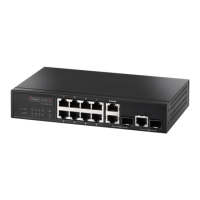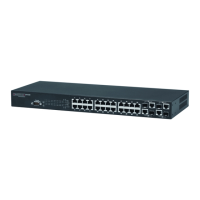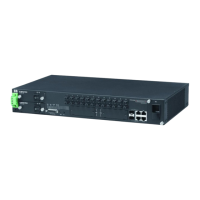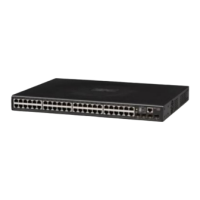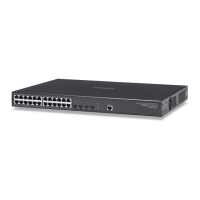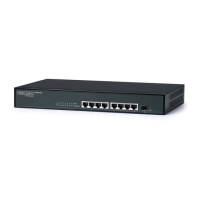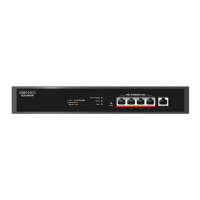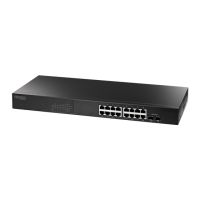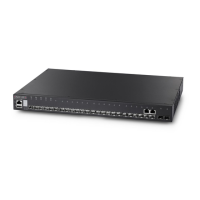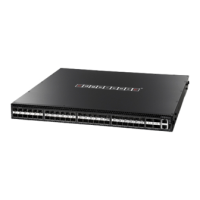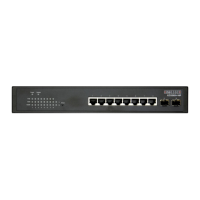C
HAPTER
6
| VLAN Configuration
IEEE 802.1Q Tunneling
– 179 –
provider’s network even when they use the same customer-specific VLAN
IDs. QinQ tunneling expands VLAN space by using a VLAN-in-VLAN
hierarchy, preserving the customer’s original tagged packets, and adding
SPVLAN tags to each frame (also called double tagging).
A port configured to support QinQ tunneling must be set to tunnel port
mode. The Service Provider VLAN (SPVLAN) ID for the specific customer
must be assigned to the QinQ tunnel access port on the edge switch where
the customer traffic enters the service provider’s network. Each customer
requires a separate SPVLAN, but this VLAN supports all of the customer's
internal VLANs. The QinQ tunnel uplink port that passes traffic from the
edge switch into the service provider’s metro network must also be added
to this SPVLAN. The uplink port can be added to multiple SPVLANs to carry
inbound traffic for different customers onto the service provider’s network.
When a double-tagged packet enters another trunk port in an intermediate
or core switch in the service provider’s network, the outer tag is stripped
for packet processing. When the packet exits another trunk port on the
same core switch, the same SPVLAN tag is again added to the packet.
When a packet enters the trunk port on the service provider’s egress
switch, the outer tag is again stripped for packet processing. However, the
SPVLAN tag is not added when it is sent out the tunnel access port on the
edge switch into the customer’s network. The packet is sent as a normal
IEEE 802.1Q-tagged frame, preserving the original VLAN numbers used in
the customer’s network.
Figure 70: QinQ Operational Concept
Layer 2 Flow for Packets Coming into a Tunnel Access Port
A QinQ tunnel port may receive either tagged or untagged packets. No
matter how many tags the incoming packet has, it is treated as tagged
packet.
The ingress process does source and destination lookups. If both lookups
are successful, the ingress process writes the packet to memory. Then the
egress process transmits the packet. Packets entering a QinQ tunnel port
are processed in the following manner:
Tunnel Uplink Ports
Double-Tagged Packets
Outer Tag - Service Provider VID
Inner Tag - Customer VID
QinQ Tunneling
Service Provider
(edge switch A)
Customer A
(VLANs 1-10)
Customer B
(VLANs 1-50)
Customer A
(VLANs 1-10)
Customer B
(VLANs 1-50)
Service Provider
(edge switch B)
VLAN 10
Tunnel PortAccess
Tunnel Port
VLAN 20
Access
VLAN 10
Tunnel PortAccess
Tunnel Port
VLAN 20
Access
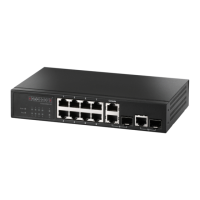
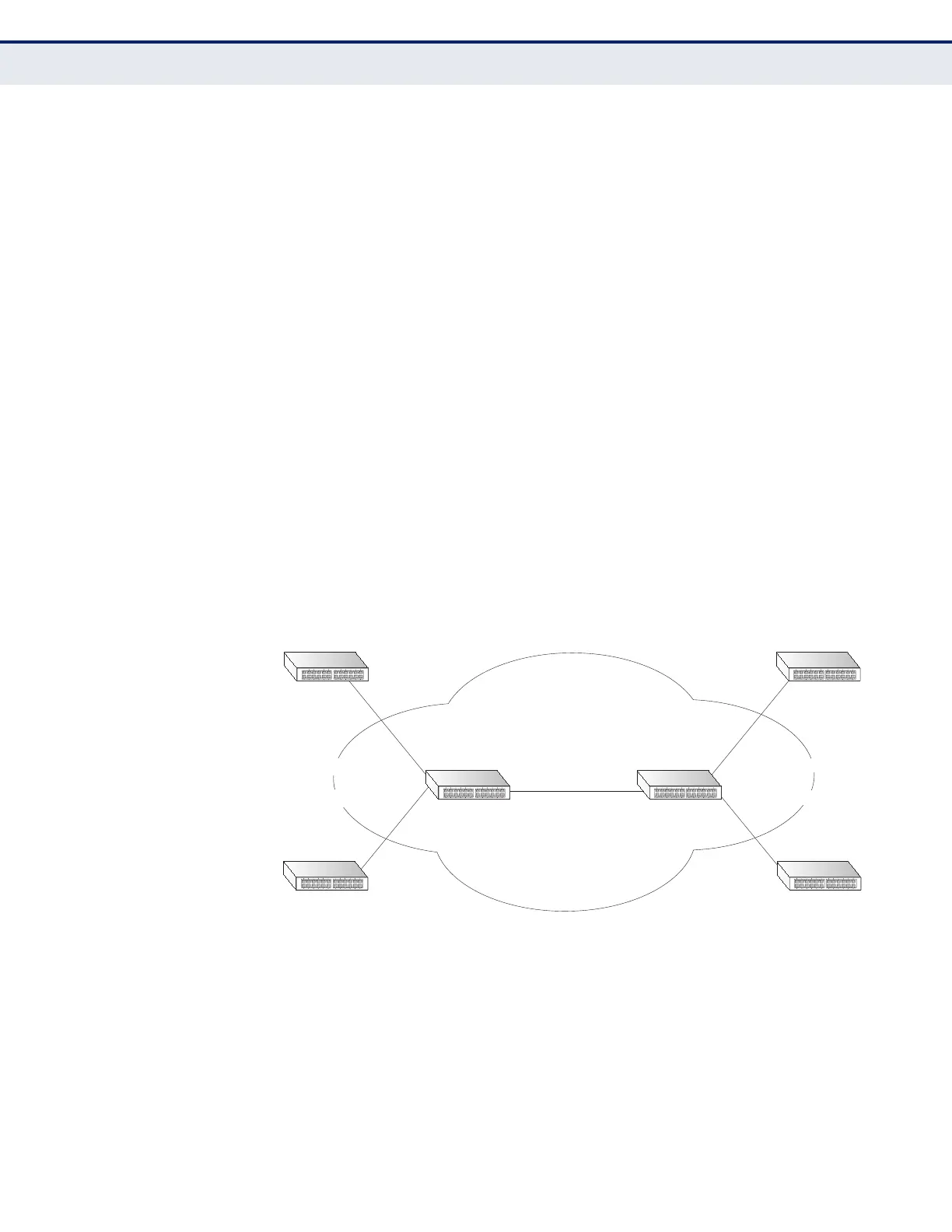